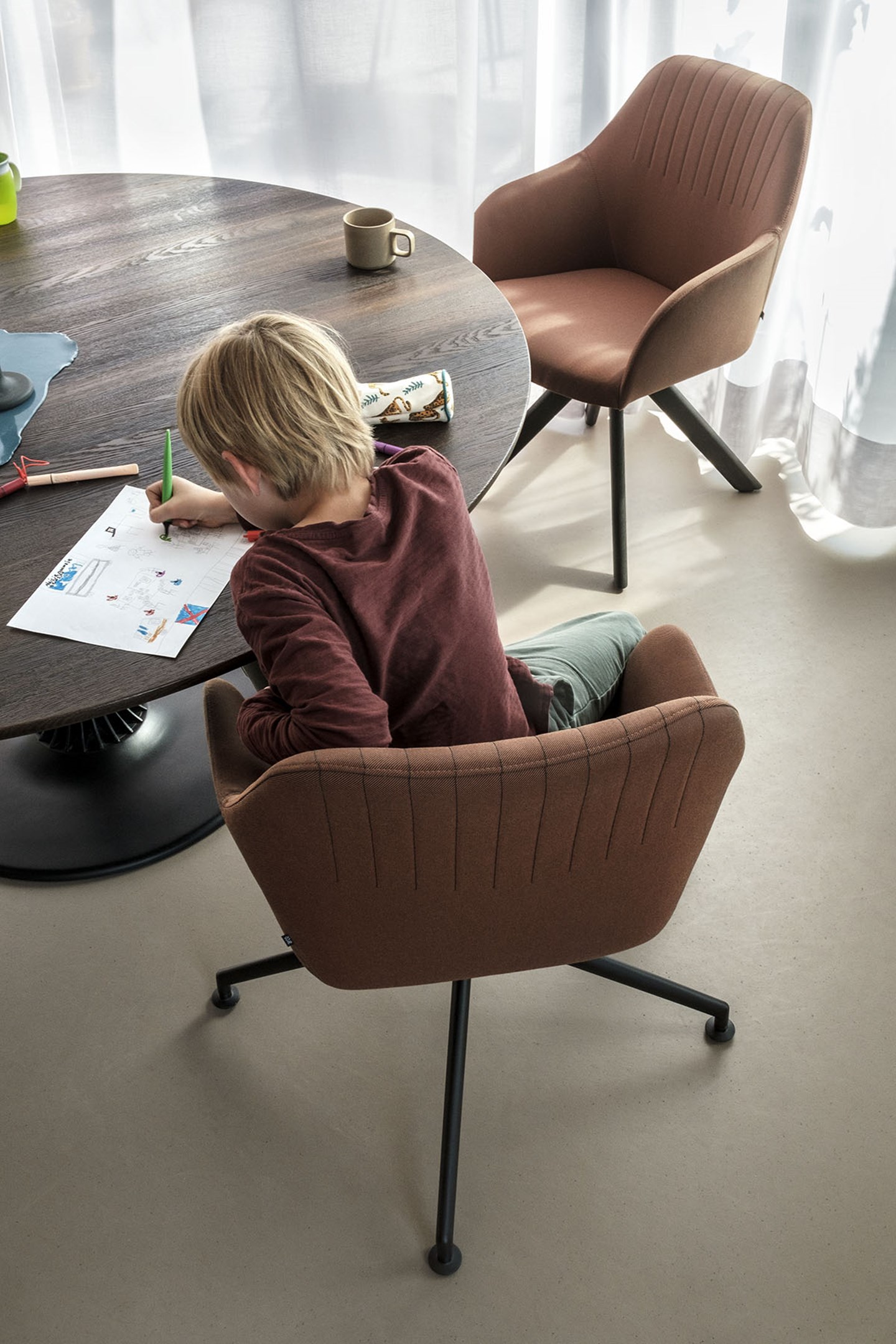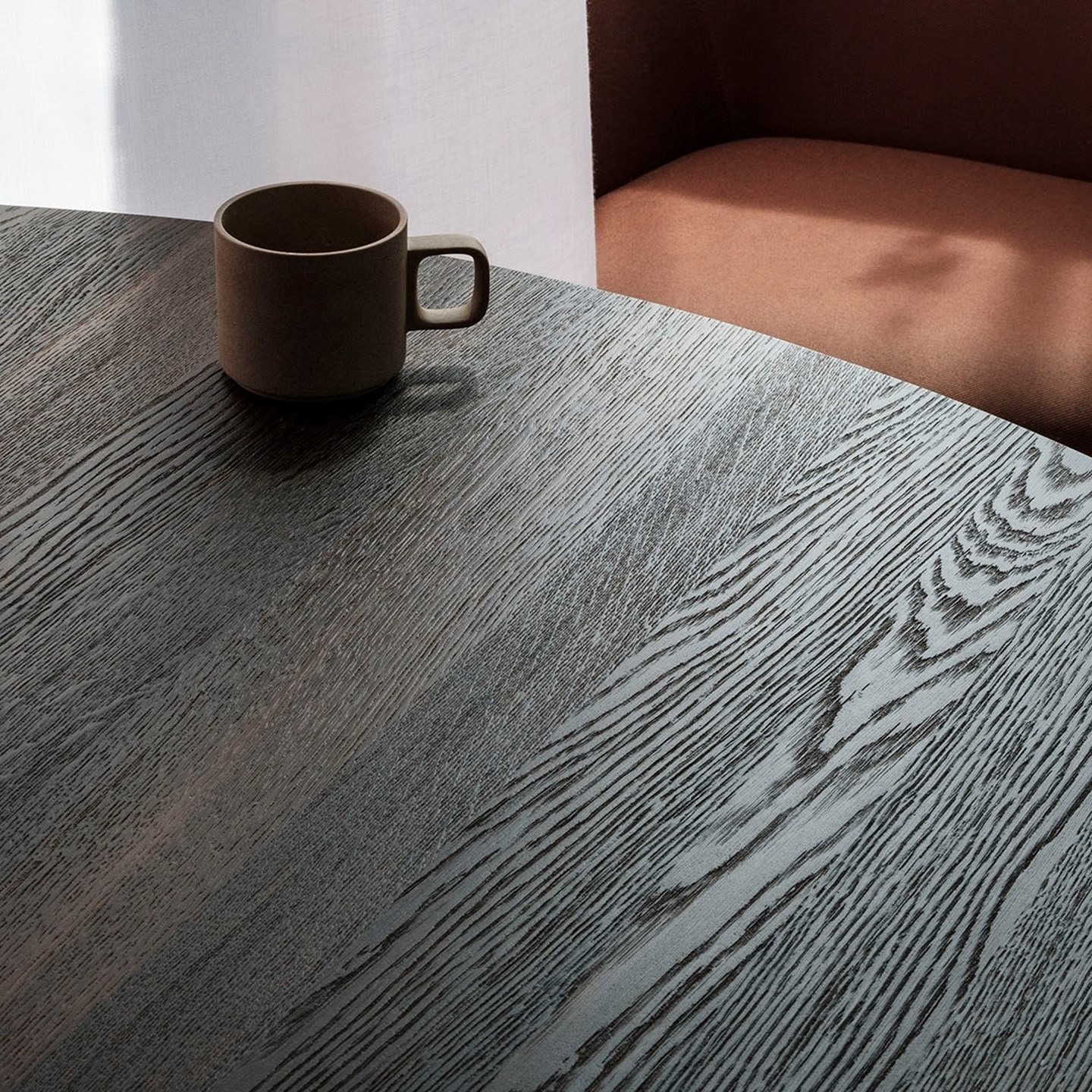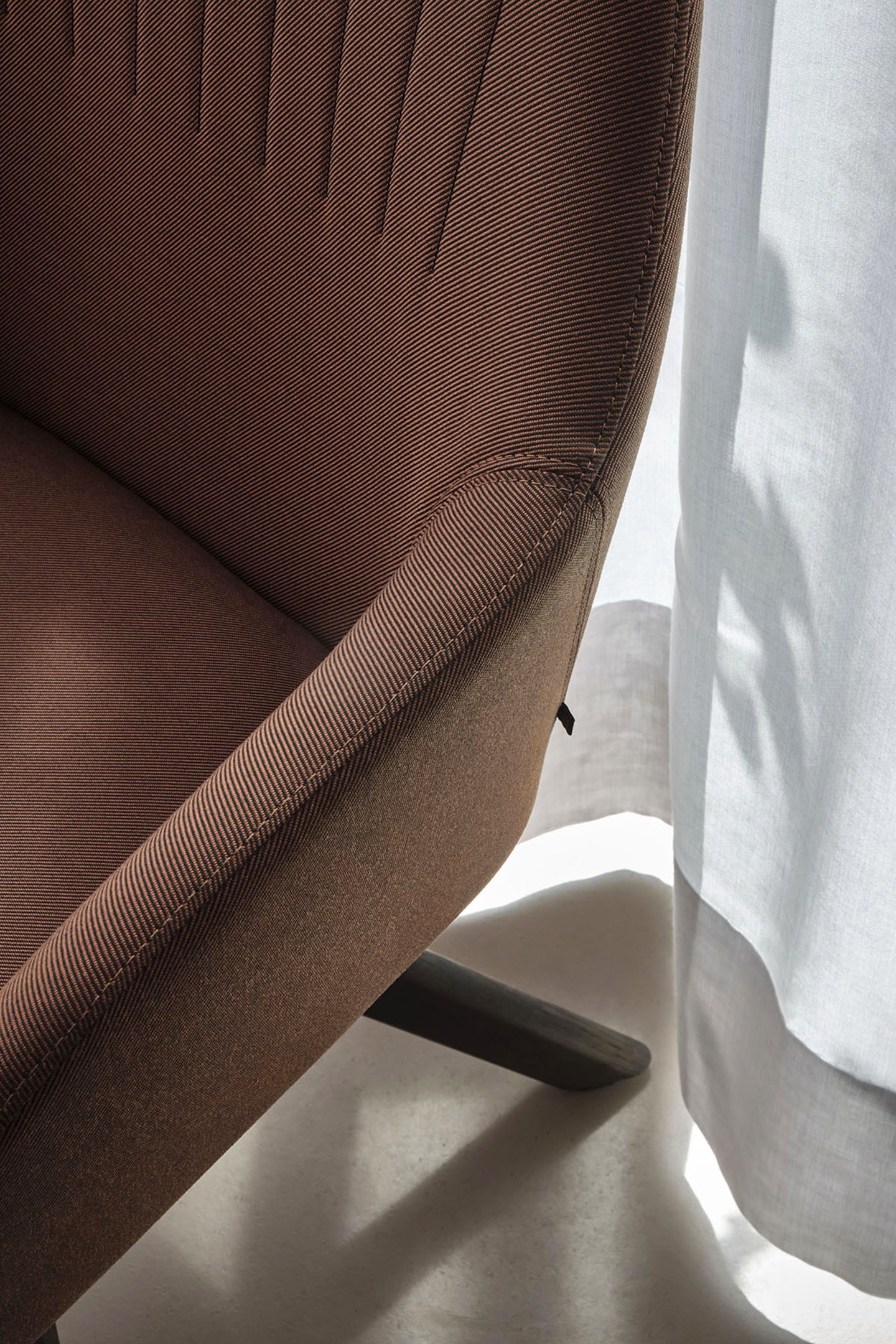The more you care for your belongings, the longer they last. Which makes sense for you, your wallet, and the environment. And if you’re planning to pass them on to the next generation, you’ll be doing them a favour too.
Of course, our furniture is designed to last, but even so: it could use a little help. On the following pages, you’ll find straightforward tips to extend its lifespan.

General information
Before using, we recommend cleaning your furniture with a damp cloth (for example, with ZO Alles Schoon from the maintenance kit delivered with the table) to remove any remaining dust residues. It is also recommended to clean the underside of the legs. Make sure that the carpet is completely dry before placing the furniture on a cleaned carpet.
Hard (scratches!), hot (shrinkage!) or wet (stains!) objects must never be placed directly on the table or cabinet, as it could cause irremovable damage. It is therefore recommended to always use coasters.
Some of our products have removable parts; should there arise some space in the joints as a result of dryness or use, simply tighten the bolts and screws of the construction.
We also like to point out to you again the fact that wood is a natural material. For example, the final colour of the wood develops under the influence of (sun)light during use (ask your dealer for explanation and advice). For equal colouring, it is advisable to also place the extra leaves in the same light during the first months. Very important for the condition of the wood is to maintain the humidity of the air as constant as possible (approx. 60%) to avoid drying out the wood (shrinkage!).
Wood
Wood (veneer, solid, duramas) with P-lacquer and furniture with colour lacquer.
Clean daily with a cotton cloth. Remove stains with a damp cloth. A degreasing detergent can remove more persistent stains.
You will get the best result when the cleaning agent soaks for a while. You can spray it on your table or cabinet and wipe it away with a damp cloth. Always clean thoroughly with clean water to remove the detergent used (however, do not overwet the surface). Finally, dry the top thoroughly. Always work in the direction of the grain. Never use wax, wax-containing substances, or abrasive agents.
Important: Fluids that spill on the surface should be removed immediately, ideally within 5 to 10 minutes at the latest. If pollen (from flowers, for example) gets on the furniture surface, carefully dab it up using adhesive tape: never rub it out! Please note that pollen and felt-tip pen stains cannot be removed.
Additionally, be aware that certain objects (such as lamps, dishes, telephones, and laptops) may have plastic protective caps underneath. Some colored substances in rubber can leave stains on the natural lacquer of the surface, and these stains are irreversible. To prevent this, always place felt pads under rubber caps.
Wood (veneer, solid, duramas) with mat-natural finish (N-finish)
Daily cleaning with a cotton cloth. Important: N-finish is more sensitive to grease than P-finish. This finish, therefore, requires a little more attention as to daily maintenance. Remove grease stains immediately with a moist cloth. More persistent stains can be removed with a degreasing detergent. When the cleaning agent can soak for a while you will get the best result. You can spray it on your table or cabinet and wipe it away with a damp cloth. Always clean thoroughly with clean water to remove the detergent used (however, do not overwet the surface). Finally, dry the top thoroughly.
Important: liquids spilt on the surface should be cleaned up immediately or within 5 to 10 minutes at most! Pollen (e.g. from flowers) must be carefully removed using adhesive tape. Never rub the pollen! Pollen and stains of marker pens cannot be removed. We also wish to draw attention to the presence of plastic protective caps under certain items (e.g. lamps, bowls, phones, laptops) as some pigments in the rubber could cause spots in the mat-natural lacquer. These stains cannot be removed afterwards. To prevent this, always put felt under the rubber feet.
Solid wood and duramas with transparent oil finish
For daily maintenance, it is sufficient to clean the table with a dry cloth or lukewarm water if necessary. We recommend removing spilt liquids immediately. Treat the table regularly with oil (twice a year on average) in order to preserve the warm, natural glow of the wood and to provide the wood with the best possible protection against the effects of substances such as liquids. We supply a special maintenance kit together with an oiled table, including a bottle of oil, (apply a thin layer of oil on a clean, dry table, distribute well and polish with a dry cloth). You can also use a good quality teak oil (see the packaging or product documentation for instructions). Treat your table regularly with oil to provide the wood with proper care and protection, thereby promoting the longevity of your table. You can easily remove light scratches and stains yourself. The special maintenance kit also contains a ball of steel wool to lightly sand the tabletop. It is important to sand the entire table top (not only the location of the stain or scratch), and always work in the direction of the grain. After sanding, treat the table with oil or teak oil. Avoid using caustic or abrasive cleaning agents.
Solid wood and duramas with a white oil finish
For daily maintenance, it is sufficient to clean the table with a dry cloth or lukewarm water if necessary. We recommend removing spilt liquids immediately. To protect the wood against scratches and the influence of substances such as liquids, the table should be treated a few times a year with white oil. A bottle of white oil is provided for this purpose. Apply a thin layer of oil, using a clean, lint-free cloth and allow it to soak for a few minutes. Use a clean cloth to wipe it away. Always try first on an unnoted area.
NB: Do not sand the tabletop.
Smoked oak
See maintenance for solid wood and duramas with the respective finish (N-, P-lacquer or oil (only solid)).
Brushed oak
See maintenance for solid wood and duramas with the respective lacquer finish (N- or P-lacquer). However, dirt and moisture can remain in the ‘seams/grooves’, which can work their way into the wood. It is, therefore, advisable to quickly remove moisture and dirt.


Textile
Keep the chair or sofa dust free by using a soft brush or vacuum cleaner (with a soft brush tip). Use a foaming agent to clean the furniture. It is difficult to provide instructions for removing stains in a nutshell, as it varies by type of stain and material. For treating stains, please see http://www.james.eu/en/stain-removal . The following applies for all agents: first try carefully on a spot that is not directly visible. Never use too excessive amounts of agents to prevent discoloration and to prevent damage to the foam layer.
Leather
Aniline leather (leather group B and D)
To maintain this type of leather, regularly wipe down with a soft, dry cloth. Aniline leather should be treated once a year with a leather protective agent for full-aniline leather. Please note! In the case of spills, dab the liquid immediately (do not rub). See www.ohmannleather.com for leather maintenance products.
Semi-aniline and dyed leather (all other leather colours)
To maintain this type of leather, regularly wipe down with a soft dry cloth, a soft brush or a moist cloth if necessary. It is recommended to treat this leather twice a year with a leather nourishing agent.
See www.ohmannleather.com for leather maintenance products.
Laminates
HPL Fenix NTM®
For daily maintenance, it is sufficient to clean the surface with a damp cloth, warm water, and mild detergent when necessary. We recommend using acetone for persistent dirt. Superficial scratches can be polished away by friction using a sponge. The warmth generated by rubbing closes the molecules, causing the scratches to disappear.
Forbo Furniture Linoleum
For daily maintenance, we recommend wiping the surface with a damp cloth using warm water. If necessary, use a mild detergent (ZO Schoon or a pH-neutral soap). Always rinse thoroughly with clean water to remove any detergent used. Allow the surface to dry thoroughly.
Important: Immediately remove any spillages (including ink, coffee, tea, red wine). Prevent stubborn stains (rings) and scratches from sharp objects; use coasters with a soft underside for cups, glasses, vases, etc.
Read more here, about Forbo Furinture Linoleum and its characteristics.
Metal
Finish: epoxy fine texture
Keep clean with a soft, lint-free, dry cloth and mild soapy water.
Finish: Chrome/stainless steel/stainless steel optic
It is sufficient to rub with a soft, dry cloth or to clean with mild soapy water. Moisten lightly with methylated spirit if necessary. Rub with acid-free vaseline once a year.
Finish: Casted aluminium
See chrome/stainless steel/stainless steel optic. Superficial scratches on a casted aluminium base can be removed with soapy water and Scotch Brite. Always work in the polishing direction.
Concrete
For maintenance instructions for concrete, see ‘wood (veneer, solid, duramas) and color lacquer with P-finish’.